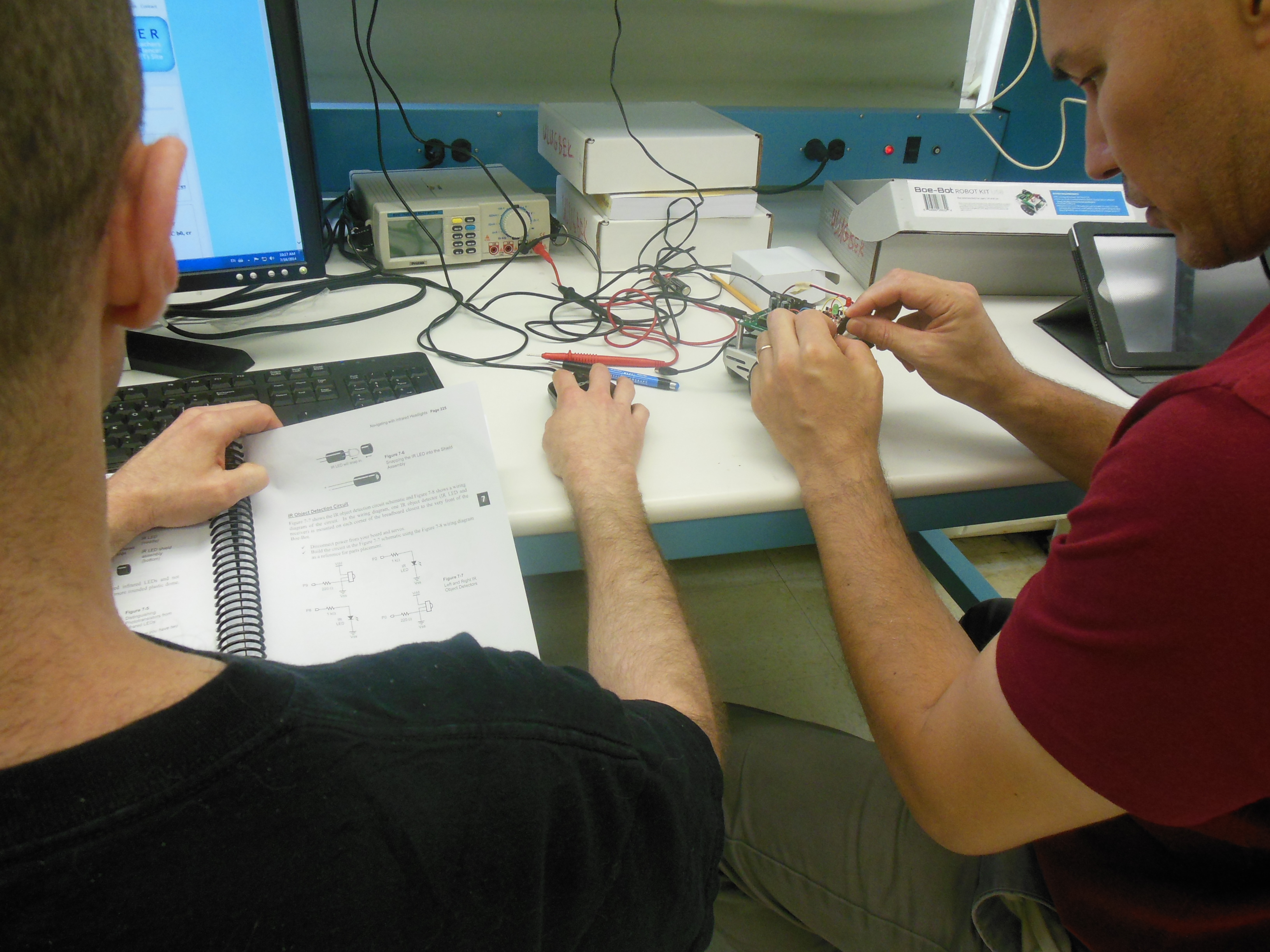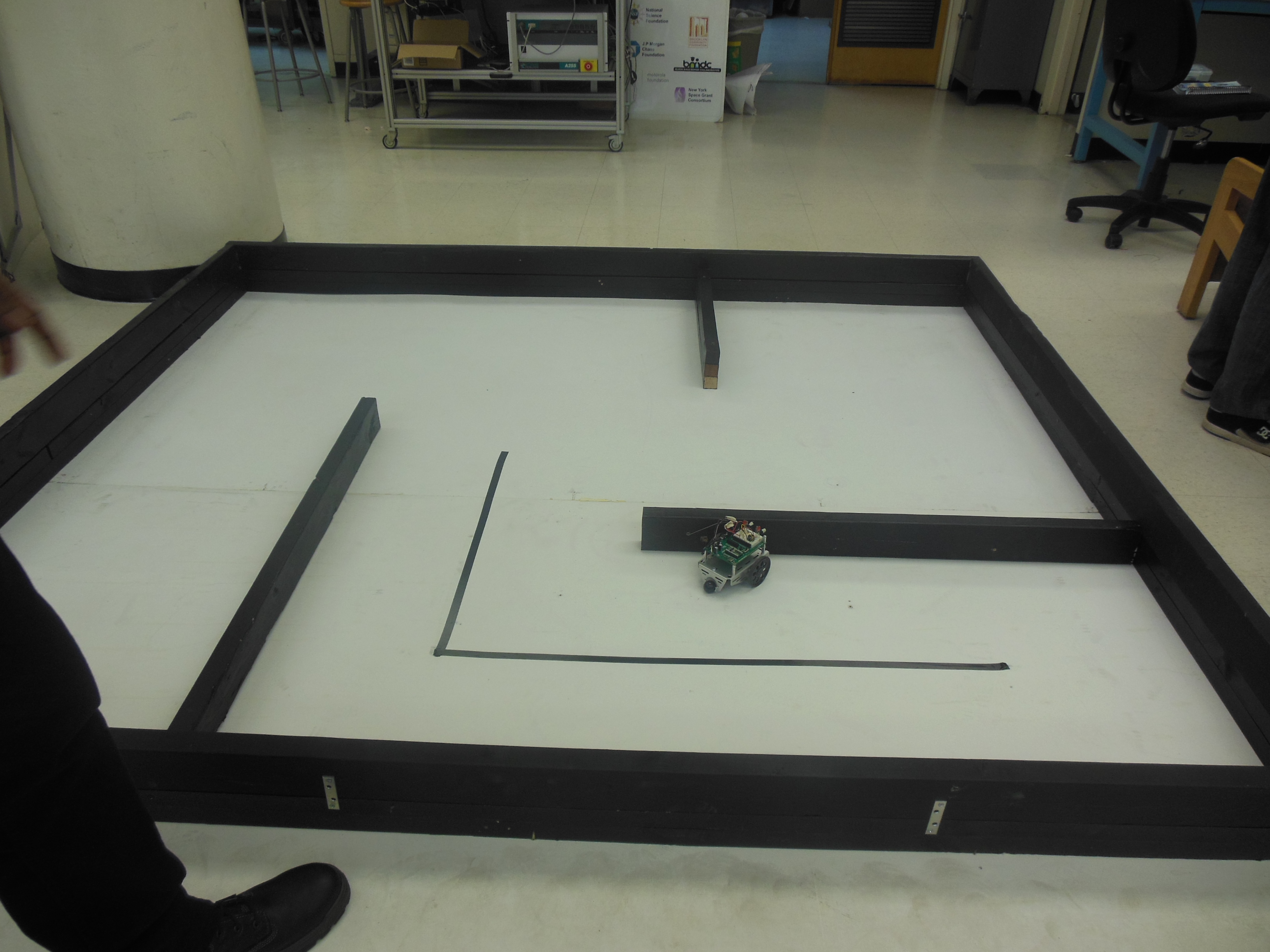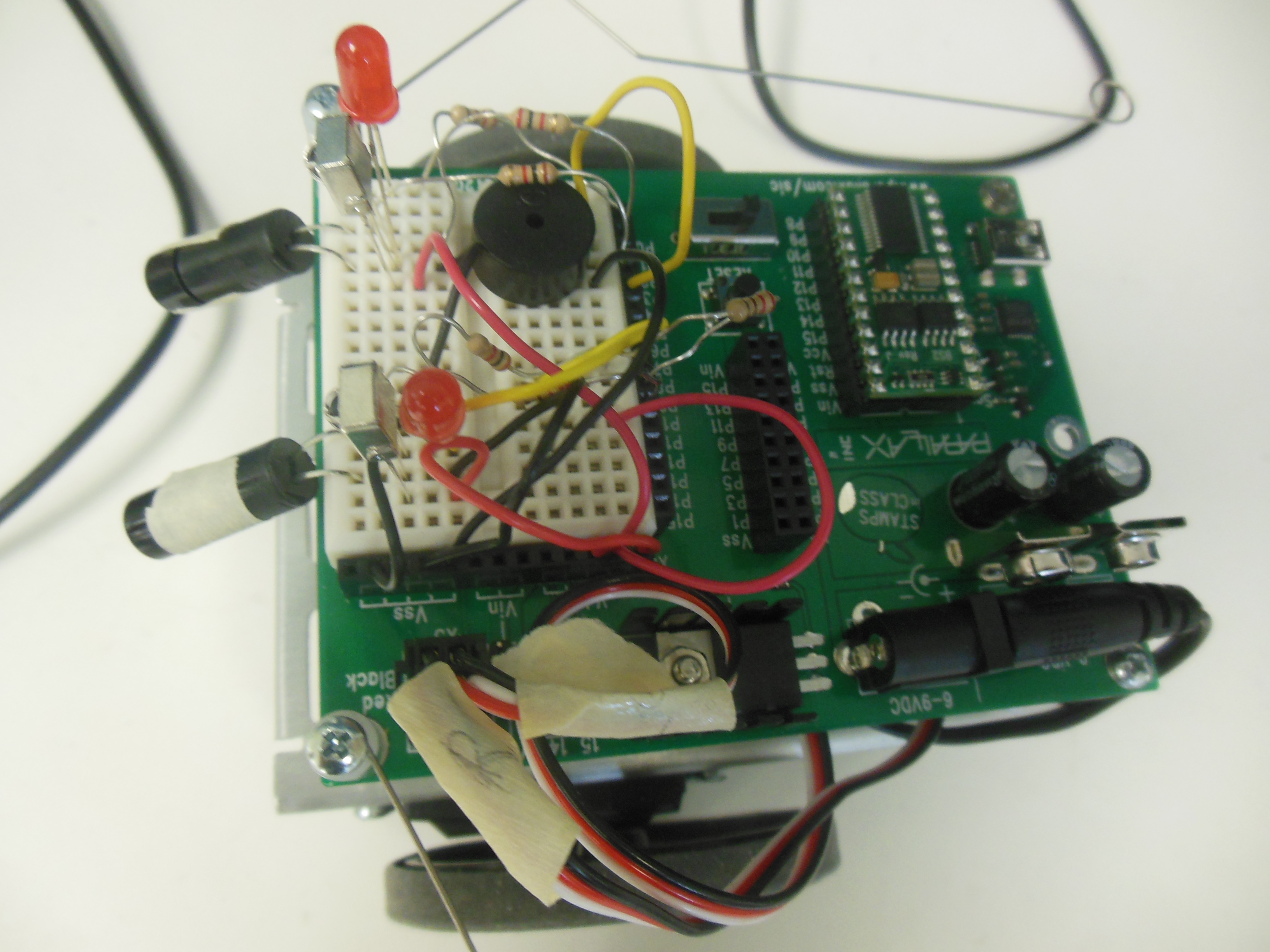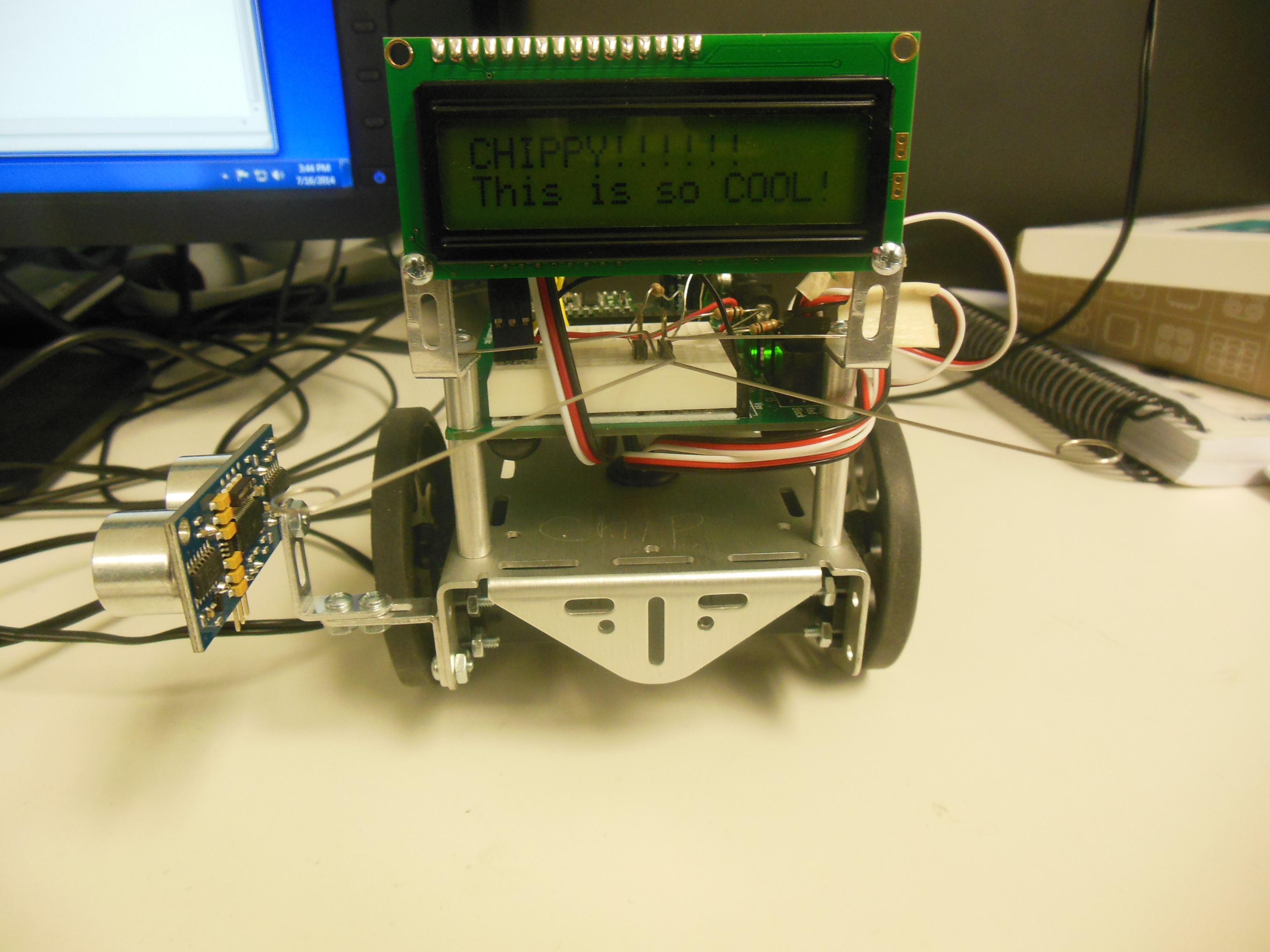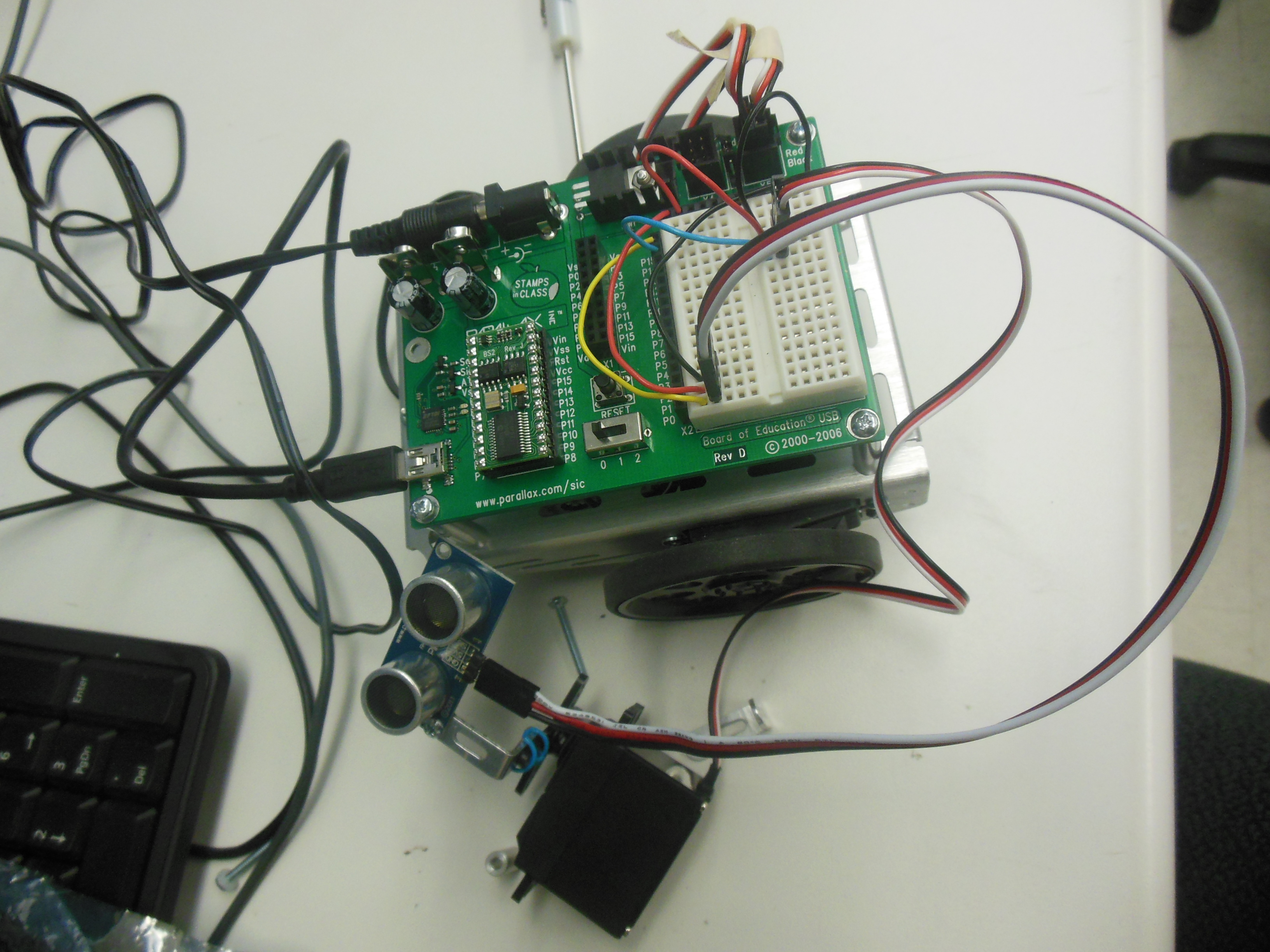July 16, 2014, Day 8:
Louis Morgan
Biology Department, Brooklyn Technical High School, since 2003
The morning started with a lecture, by Jared Alan, on RC passive filters. He discussed the low-pass and the high-pass filters. A fascinating discussion on differential equations and Laplace transforms ensued! A graphical interpretation (Bode plot) of the low-pass filter can provide invaluable feedback during systems design. The afternoon lecture was about op-amps, which are found in active filters. An op-amp contains a number of active elements such as amplifiers and transistors in their design.
In the research lab we continued to work on the Boe-Bot. We were able to complete the activities in the Boe-Bot robotics textbook, which included phototransistors and infrared headlights in the designs. In addition some teams were able work on additional projects, such as using the ultrasonic distance sensor on their Boe-Bots!
The Boe-Bots was certainly one of the highlights of the course so far! However today was the end of the Boe-Bots programming and design. Tomorrow we will be learning business venturing. Here are some comments from teachers on their highlights of the program so far:
a. Building and testing Boe-Bots e.g., simple binary light sensor and navigating with infrared headlights was very interesting! These designs have many applications in biological systems such as light intensity photosynthesis or animal behavior (response)!
----Louis.
b. Object detection and avoidance was interesting. When no object was detected the output was high when it detected something, the output was low and it pulled back.
----Angeleke.
c. Programming our robot with whiskers and also with IR detectors and LED’s. The latter was challenging and at times frustrating – three of us tried building the circuit and we used a different board of education – but it was nonetheless absolutely fascinating.
----Prasad.
d. I have enjoyed coming up with our own projects for the Boe-Bots and programming it to accomplish a task.
----Sarah
e. The most fascinating part of the program thus far was creating our own program to use 2 different sensors to navigate the bot’s way around the maze! We felt so accomplished!!!
----Lisa
f. I’ve loved learning about the different components frequently used in electronics (transistors, op-amps, relays). I understand how things work much more deeply and can’t wait to share this with my students!
----Mike Z
g. The hands-on experience of conducting pilot tests on the components of the apparatus for our research project has been exciting. We were able to apply codes from the experiments and theories to enable the components to work. We have also found that the apparatus can be constructed from bio-inspiration of multiple species of animals.
----Dr Walcott.
